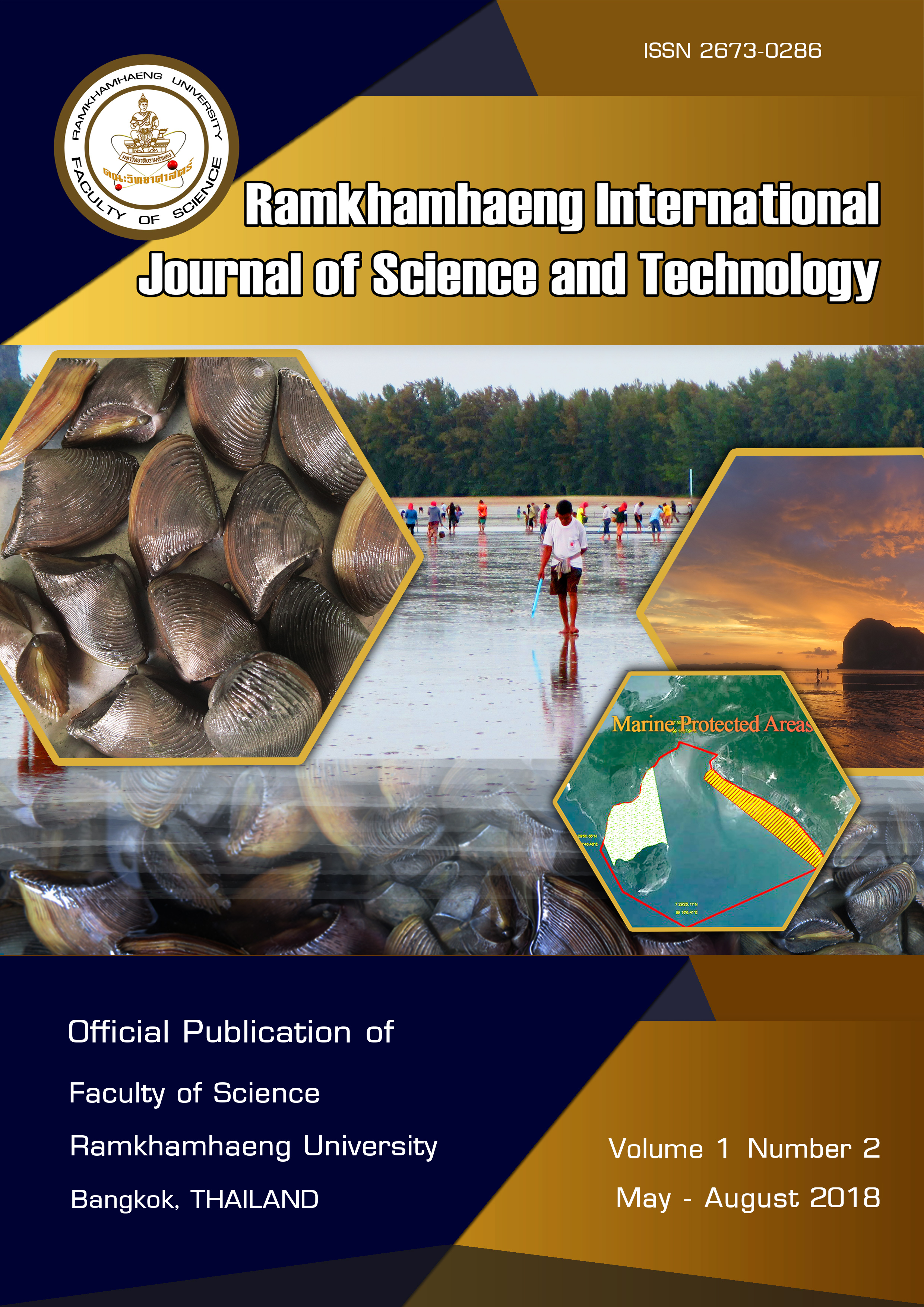Assessing population structure of the wedge clam on sandy beaches in a shellfish protected area in Trang Province
Keywords:
Andaman Sea, bivalves, conservation, Donax scortum, management, protected areaAbstract
The wedge clam, Donax scortum is a shallow-bottom bivalve, generally found on sandy beaches. This species is capable of reaching high population densities and is one of the most important bivalves to local economies in the Andaman coast of Thailand. Local fishers collect wedge clams by observing their siphons and digging with a PVC pipe tipped. A shellfish protected area was established in Trang Province as a management strategy for clam’s conservation. This study aimed to compare the population structures of D. scortum in a shellfish protection area compared to a non-protected beach at Hat Pak Meng in 2018. The results showed that the 5–6 cm size class of D. scortum in the shellfish protected area was higher than those in non-protected areas. Recruitment of D. scortum was also observed in the shellfish protection area. This study shows the importance of D. scortum and sandy beach ecosystem services. The efforts from conservation groups and local communities in the Pak Meng and nearby areas can help conserve marine and coastal resources. The shellfish protection area can be a learning centre for tourists while promoting ecotourism in Trang Province.
References
Aungsakul, K, Jaroensutasinee, M, Jaroensutasinee, K (2007) Numerical study of principal tidal constituents in the Gulf of Thailand and the Andaman Sea. Walailak Journal of Science and Technology (WJST) 4(1) 95-109
Bennett, NJ (2018) Navigating a just and inclusive path towards sustainable oceans. Marine Policy 97:139-146
DoF (2018) Fisheries statistics of Thailand 2016. Department of Fisheries, Ministry of Agriculture and Cooperatives Bangkok, p. 87
FAO (2016) Technical and socio-economic characteristics of small-scale coastal fishing communities, and opportunities for poverty alleviation and empowerment, by Uwe Tietze. FAO Fisheries and Aquaculture Circular No. 1111. Rome, Italy
Hydrographic-Department (2017) The highest and lowest water level in 2018. Hydrological Department, Thai Royal Navy Bangkok
Kelleher, G, Kenchington, RA (1991) Guidelines for establishing marine protected areas (Vol. 3). SADAG, Bellegarde-Valserine, France
McLachlan A, Brown AC (2006) Sandy-beach Invertebrates. In: A McLachlan, AC Brown (eds) The Ecology of Sandy Shores. Academic Press, pp 65–90
Nabhitabhata J (2009) Checklist of Mollusca Fauna in Thailand. Office of Natural Resources and Environmental Policy and Planning
Paterson, B, Isaacs, M, Hara, M, Jarre, A, Moloney, CL (2010) Transdisciplinary co-operation for an ecosystem approach to fisheries: a case study from the South African sardine fishery. Marine Policy 34(4), 782-794
Peerakeitkhachorn J, Watanakul W (1997) Study on spawning season of Leather Donax (Donax scortum) at Sikao District, Trang Province. Rajamangala University of Technology Srivijaya Trang Campus, Bangkok, p. 62
Saeedi, H, Costello, M J (2012) Aspects of global distribution of six marine bivalve mollusc families. Clam fisheries and aquaculture 27-44
Singh, YT (2017) Status of population dynamics of the Asian wedge clam, Donax scortum (Bivalvia: Donacidae): A first report from Asia. Journal of the Marine Biological Association of the United Kingdom 97(8), 1635-1642
Wasson, K, Suarez, B, Akhavan, A, McCarthy, E, Kildow, J, Johnson, K S, Feliz, D (2015). Lessons learned from an ecosystem-based management approach to restoration of a California estuary. Marine Policy 58, 60-70
Downloads
Published
Issue
Section
License
Copyright Notice: a copyright on any article in the published journal is retained by the Ramkhamhaeng International Journal of Science and Technology. Readers or Users grant the right to use of the Article contained in the Content in accordance with the Creative Commons CC BY-NC-ND license and the Data contained in the Content in accordance with the Creative Commons CC BY-NC-ND.



